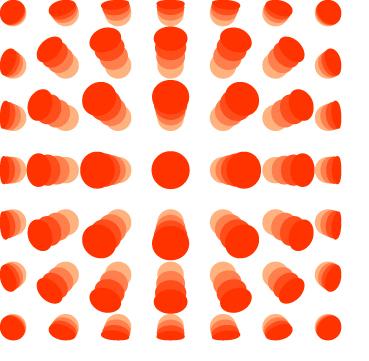Project Area
C
Structural dynamics
Project C1
Theory of ultrafast radiative force mechanisms
K. Richter
F. Gießibl
We will address novel aspects of dynamical forces in AFM-based junctions under pulsed radiation. We will explore how fast non-adiabatic mechanisms reveal themselves and whether quantum interference in the dynamics on coupled Born-Oppenheimer surfaces affects the associated forces. Our techniques comprise effective models and microscopic approaches, such as combined quantum-classical simulations and wave packet dynamics, both on a con-ceptual level and guided by experiment.
Project C2
Direct measurement of ultrafast atomic forces
F. Gießibl
R. Huber
K. Richter
We strive to directly image the formation and breaking of chemical bonds on the temporal dimension, ranging from the time it takes to redistribute electrons when bonds change their character and strength to the much slower redistribution of the nuclei. Ideally, this will cover the observation of bond formation beyond the Born-Oppenheimer approximation, including the phenomena when nuclei vibrate back to their new equilibrium positions governed by the post-bonding electron distribution.
Project C3
Ultrafast cryogenic electron microscopy
S. Schäfer
C. Ziegler
We will develop the instrumental building blocks to extend the temporal resolution of cryogenic transmission electron microscopy (cryoEM) into the nanosecond time domain. To this end, we combine state-of-the-art single particle analysis (SPA) cryoEM with the emerging tech-niques of ultrafast transmission electron microscopy. Several challenges in implementing time-resolved cryoEM (tr-cryoEM) are addressed within the project, such as a dose-efficient data collection for assembling movies of protein structural dynamics and achieving near-native protein specimen environments compatible with light-triggered dynamics.
Project C4
Sub-nanosecond energy transfer in biomolecular models
D. Grohmann
J. Lupton
Förster resonance energy transfer (FRET) is often referred to as a “molecular ruler” since it allows measurements of distances on the biologically relevant length scale of nanometers. Temporal changes in FRET efficiency can report on conformational dynamics of biomolecules, but the resolution is typically limited to milliseconds. At best, a nanosecond resolution has been achieved with advanced excitation and detection schemes. Using time-resolved multi-messenger photon-correlation techniques to probe the degree of excitonic coherence, i.e., the strength of the dipole-dipole interaction between fluorophores, we strive to push the temporal resolution into the picosecond regime. Having calibrated the method with defined DNA origami structures, we will examine ultrafast biomolecular processes such as RNA folding, protein loop dynamics, and DNA opening by Cas9.
Project C5
Ultrafast dynamics in respiratory proton pumping
C. Ziegler
S. Schäfer
We will use a combination of cryo-electron microscopy (cryoEM) and ultrafast scanning near-field optical microscopy (U-SNOM) to elucidate the molecular mechanism of the two-step electron tunneling process in cytochrome bo3, a membrane protein that couples the electron transfer to proton translocation across the membrane. We will visualize individual states of charge transfer and co-enzyme oxidation using a pump-probe vitrification approach for high-resolution 4D cryoEM. Moreover, we will provide a temporal sequence of atomistic structures at crucial time-points in electron transfer identified by U-SNOM.

